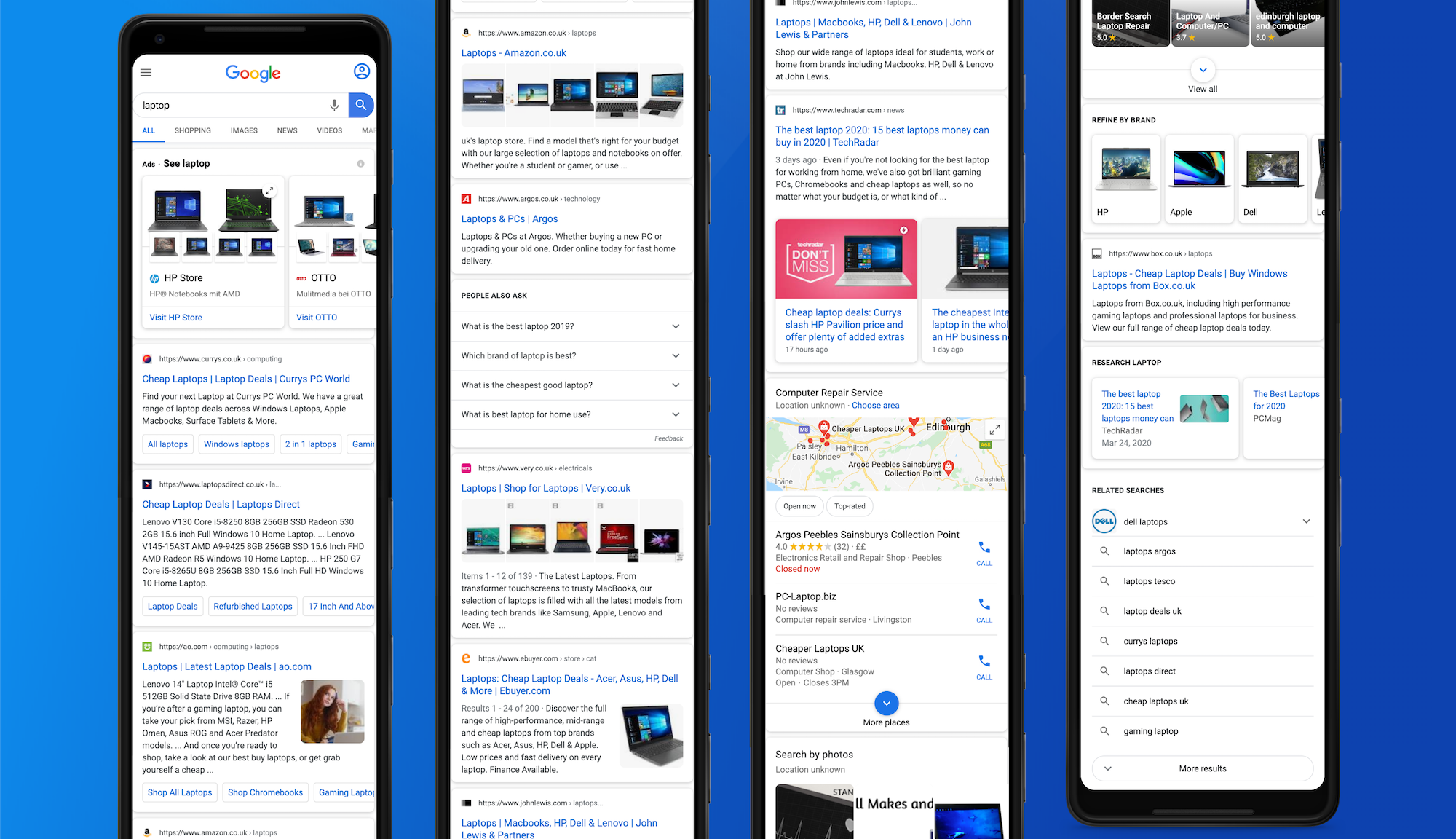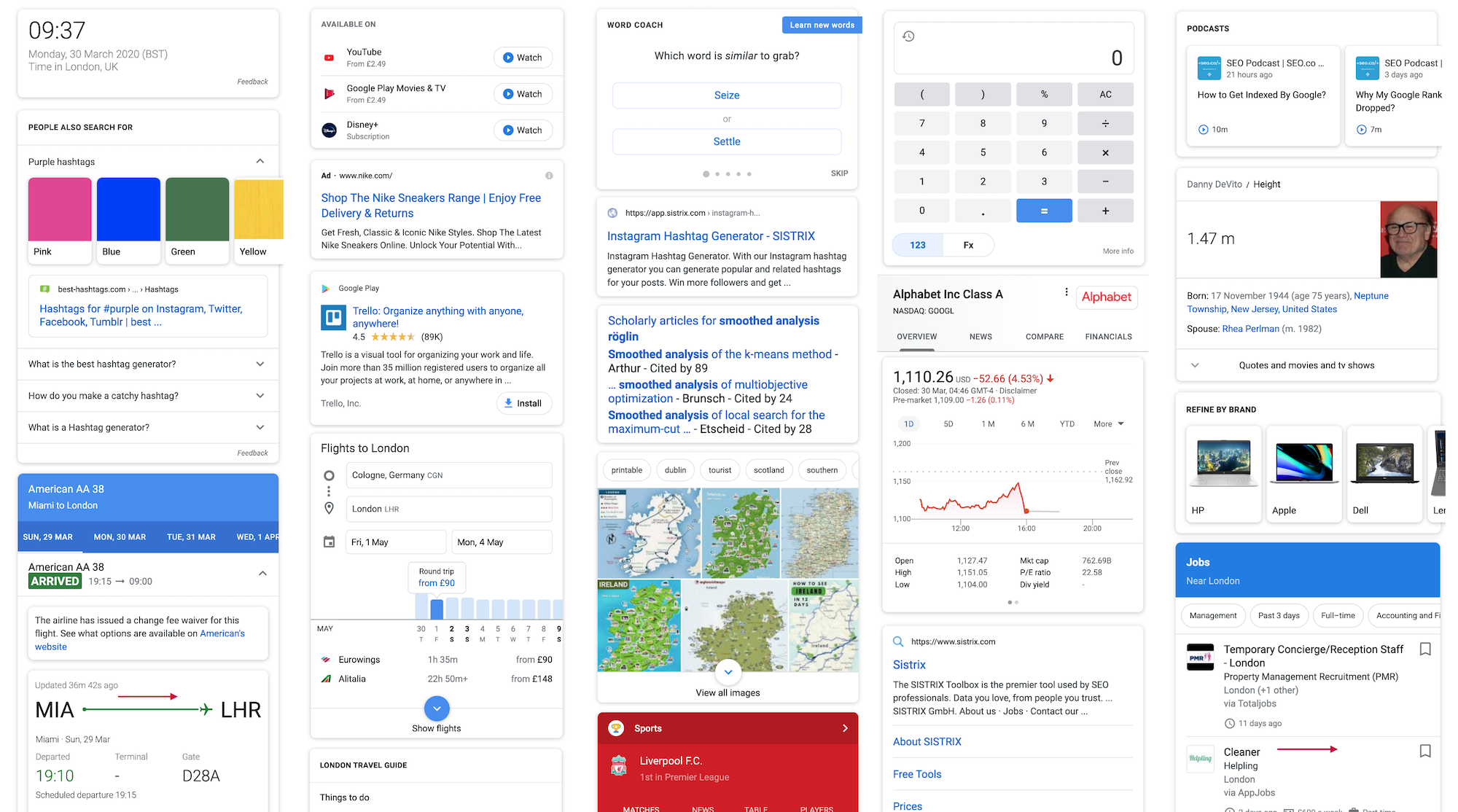The Google search results are more diverse than ever. In addition to organic results, there are many new types of results that appear. To reflect the reality of the situation in the SERPs we have completely reworked how we process the search results.
A lot has changed at Google since the days of the ’10 blue links.’ Besides the well-known organic results, we’re now seeing more and more new and unique result units. To help you to visualise this we’ve completed a new upgrade project. In this article you’ll learn more about the background, the details and the implementation.
Very few Google users will recognise the changes – and yet it makes a huge difference for website operators whether organic results or one of the numerous Google result types appear in strong positions in the SERPs.
A picture often says more than a thousand words: Here you see the first page of the search results for the search term “laptops” on the mobile phone:

It is interesting to see how diverse the search results have become – ads in various shapes and colours, messages, user questions, Google Shopping, similar search queries and organic results in-between.
We’ve now analysed billions of search results and have catalogued and sorted the result types. Here’s a small selection:

Google mixes the SERPs up with many different boxes depending on the search intent, data availability and possible monetisation aspects. In total, we have counted over 40 different types of result – from classic organic results, to featured snippets, the full set of vertical Google integrations such as flight or hotel searches, to rarely occurring types such as an interactive vocabulary game for foreign languages (“Word Coach”) .

Identifying over 40 result types
These 40-plus different result types are now analysed and shown in the Toolbox. After a lot of work we’re now able to identify all the continuously-used result types and record them, along with the position, to provide you with an evaluation.
For many of the result unit types, we also evaluate the content. In the headlines you can see which messages are linked. In picture boxes, which pictures are displayed, and so on. Other search queries, local businesses and more, are also analysed in detail.
Organic results are counted as before
Nothing changes with respect to the counting of organic rankings. Most of the results units evaluated do not displace classic organic positions but are shown in addition to them. The types that displace an organic hit (such as the news / headline box in the screenshot here) have also been rated as organic hits in the Toolbox. As a result of the changeover, there are no significant changes in the Toolbox rankings or in the Visibility Index.
The future of search is mobile
As before, we collect and analyse all relevant search terms separately for both the desktop and the smartphone. But one thing has become very clear in the last few months: The desktop is now a second-class device for Google. All important changes and adjustments take place first on the smartphone. The desktop SERPs are adjusted later. While the organic rankings between desktop and cell phone are getting closer, there are still big differences in the design of the other result types.
The new SERP analysis is available now, for all countries. An example from the UK, using the mobile SERP is “home improvement store”
Conclusion
With the SISTRIX Toolbox you now have the perfect view of the Google results: all result types are now recognised and evaluated, and not just the organic results. Given this new information it will be, in time, possible to analyse search intention, competitive landscape further, look at developments over time and much more.
As always, this extension is free for our Toolbox users.

